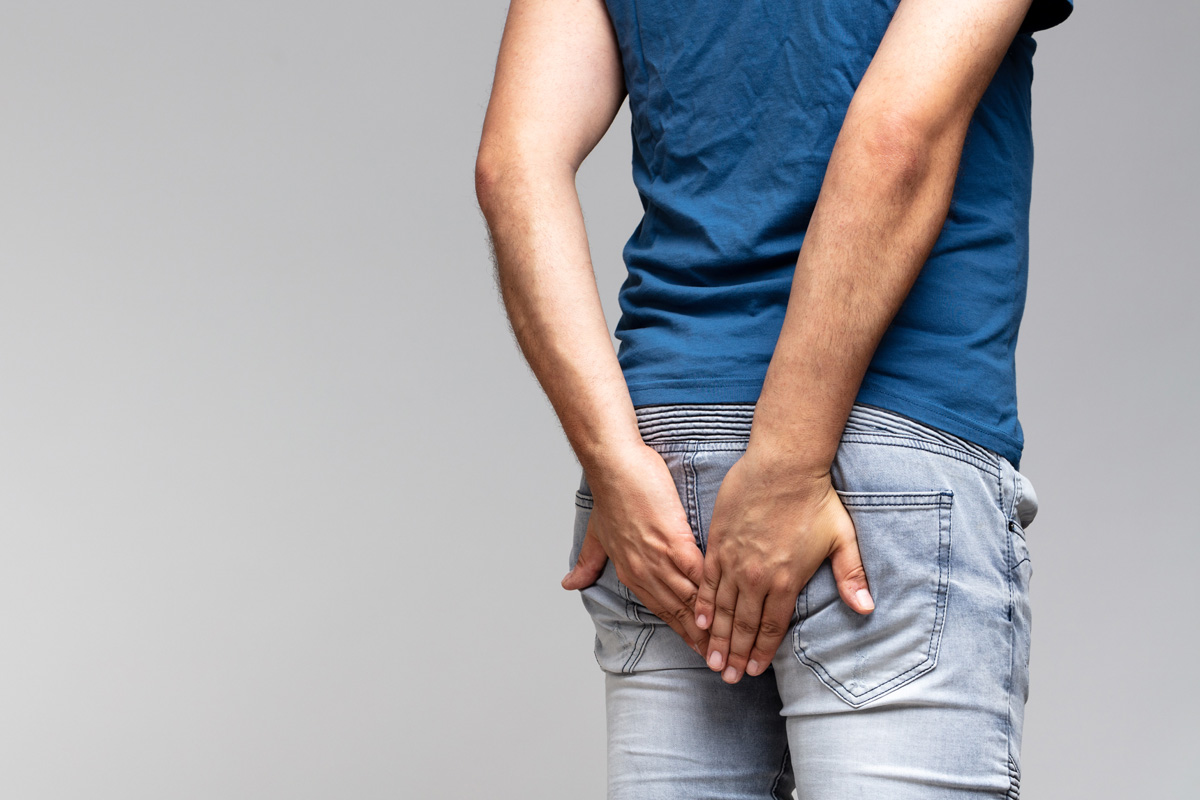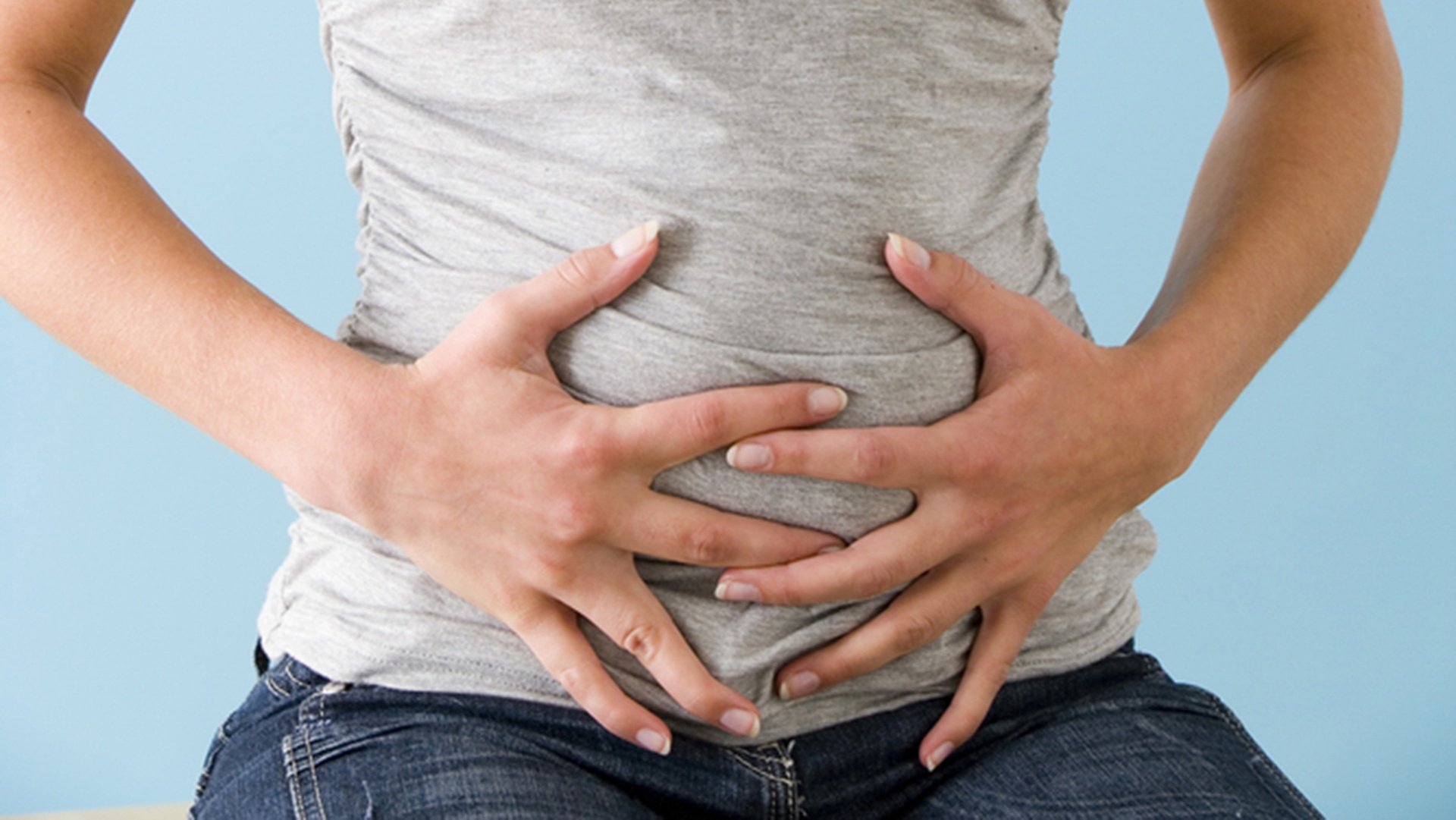

FAQs
Why Do I Fart When I Lay Down
Modified: August 5, 2023
Discover the answer to the common question, "Why do I fart when I lay down?" Find out more about this and other general questions.
(Many of the links in this article redirect to a specific reviewed product. Your purchase of these products through affiliate links helps to generate commission for Under-tec.com, at no extra cost. Learn more)
Table of Contents
Introduction
Flatulence, a natural bodily function, is something that everyone experiences from time to time. It can be quite embarrassing, especially when it happens in public or when you’re trying to relax and unwind. But have you ever noticed that you seem to fart more when you lay down? It’s a common phenomenon that many people wonder about. In this article, we’ll explore the reasons behind why farting often occurs when we are in a horizontal position.
Understanding the process of farting is essential to comprehend why it happens more frequently when laying down. Farting, also known as passing gas, is the release of excess air and gases from the digestive system through the rectum. It is a normal bodily function that helps to relieve discomfort caused by the buildup of gas in the intestines.
There are several factors that can contribute to the increased occurrence of flatulence when lying down. These include changes in the positioning of the digestive system, relaxation of muscles, altered movement of gases, and even food choices. By understanding these factors, we can better comprehend why farting becomes more apparent in the horizontal position.
In the following sections, we will delve deeper into each of these factors and examine how they play a role in causing increased flatulence when laying down. We will also discuss some preventive measures and remedies that can help alleviate the discomfort and embarrassment associated with excessive flatulence.
Understanding Farting
To understand why farting occurs more frequently when laying down, it’s important to have a basic understanding of the process of farting. Farting is a normal bodily function that involves the release of excess air and gases from the digestive system through the rectum.
When we eat or drink, we also swallow a certain amount of air. Additionally, the digestive process itself produces gases as it breaks down food and absorbs nutrients. These gases mainly consist of nitrogen, oxygen, carbon dioxide, hydrogen, and sometimes methane.
The excess gas that builds up in the digestive system needs a way to escape. The body has a sophisticated mechanism in place to release this gas, preventing discomfort and bloating. This mechanism involves the relaxation of the anal sphincter muscles, which allows the gas to pass out of the body as a fart.
Flatulence is a normal and healthy occurrence, and the average person passes gas anywhere between 14 to 23 times per day. However, several factors can contribute to an increase in the frequency and intensity of farting, one of which is the positioning of the body.
When we are in a standing or sitting position, the positioning of our digestive organs is relatively vertical. This alignment allows for the natural movement of gas through the digestive tract. However, when we lay down, the position of our digestive system changes, and this can impact the movement of gases and the frequency of farting.
Now that we have a basic understanding of farting and the role it plays in the digestive process, let’s explore the various factors that contribute to increased flatulence when laying down.
Causes of Flatulence
Flatulence, or passing gas, is a normal bodily function that occurs as a result of the digestive process. It is caused by the buildup of gases in the gastrointestinal tract, which can be attributed to several factors.
One common cause of flatulence is the consumption of certain foods and drinks. Foods that are high in fiber, such as beans, lentils, and cruciferous vegetables, contain complex carbohydrates that are difficult for our bodies to digest. As a result, these foods often ferment in the intestines, leading to the production of excess gas.
In addition to high-fiber foods, certain foods are known to produce gas in the digestive system. These include carbonated beverages, spicy foods, fatty foods, and foods that contain artificial sweeteners. These substances can contribute to increased gas production and, consequently, more frequent flatulence.
Drinking carbonated beverages and consuming gas-producing foods can introduce additional air into the digestive system. When we eat or drink, we naturally swallow air along with it. This air can become trapped in the digestive tract, leading to increased gas buildup and more frequent flatulence.
Another factor that can contribute to flatulence is the presence of certain gut bacteria. Our intestines are home to trillions of bacteria, both beneficial and harmful. Some bacteria produce gases as a byproduct of breaking down food in the intestines. If there is an imbalance in the gut bacteria or an overgrowth of certain types of bacteria, it can result in increased gas production and more frequent flatulence.
Furthermore, medical conditions such as irritable bowel syndrome (IBS) and lactose intolerance can also contribute to excessive flatulence. IBS is a chronic disorder that affects the large intestine, causing symptoms such as bloating, abdominal pain, and changes in bowel movements. Lactose intolerance, on the other hand, is the inability to digest lactose, a sugar found in milk and dairy products. Both conditions can lead to increased gas production and more frequent flatulence.
It’s important to note that while flatulence is a normal bodily function, excessive or persistent flatulence accompanied by other symptoms may indicate an underlying health issue. If you are concerned about your flatulence patterns or experience severe discomfort or changes in bowel habits, it’s best to consult with a healthcare professional for a proper diagnosis and appropriate treatment.
Effects of Laying Down on Farting
When we lay down, whether it’s on our back, side, or stomach, there are several effects on the body that can contribute to increased flatulence. These effects can be attributed to the positioning of the digestive system, the relaxation of muscles, and changes in gas movements.
One of the primary effects of laying down on farting is the change in the positioning of the digestive system. When we are in a standing or sitting position, the organs in our abdomen, including the stomach and intestines, are relatively vertical. This vertical alignment allows for the natural movement of gas through the digestive tract. However, when we lay down, the positioning of our digestive organs becomes more horizontal, which can impede the smooth movement of gases through the intestines.
Another effect of laying down is the relaxation of muscles. When we are upright, the muscles in our abdomen and pelvic area help to support the organs and maintain the integrity of the digestive system. However, when we lay down, these muscles tend to relax, including the sphincter muscles that control the release of gas. This relaxation can lead to an increased likelihood of gas escaping, resulting in more frequent flatulence.
The change in gas movements is also a contributing factor to increased flatulence when laying down. Normally, gas moves through the digestive system in a coordinated manner. When we lay down, the natural movements of gas can slow down or become disrupted. This can lead to the accumulation of gas in certain parts of the digestive tract, resulting in increased flatulence.
It’s also worth noting that when we lay down, there is a decrease in physical activity and movement. This decrease in activity can affect the overall functioning of the digestive system. Regular physical activity helps to stimulate the muscles in the abdomen and promote the movement of gas through the digestive tract. Without regular movement, gas can become trapped and contribute to increased flatulence.
In summary, laying down can have several effects on farting. The change in positioning of the digestive system, relaxation of muscles, changes in gas movements, and decreased physical activity can all contribute to increased flatulence. While these effects are normal and don’t necessarily indicate any underlying health issues, it can be helpful to understand them in order to manage and reduce flatulence when laying down.
Digestive System Positioning
The positioning of the digestive system plays a crucial role in the occurrence of flatulence, especially when laying down. When we are in an upright position, such as standing or sitting, gravity helps to facilitate the movement of gas through the digestive tract. However, when we lay down, the positioning of our digestive organs changes, which can impact the natural gas movements.
In an upright position, the stomach sits above the intestines, allowing for a more efficient flow of gas. The gas produced during digestion can move upward towards the esophagus and be released through burping. Additionally, the intestinal walls can contract and push gas through the digestive system, aiding in the elimination of excess gas.
When we transition to a horizontal position, the organs in our abdomen, including the stomach and intestines, shift. In this horizontal position, gas can become more easily trapped in various parts of the digestive system, resulting in increased flatulence.
When we lay on our back or stomach, the gas has to travel against gravity in order to be released. This can lead to gas getting trapped in the lower part of the intestines, causing increased flatulence as the gas seeks an escape route. The positioning of the intestines horizontally can hinder the natural movement of gas and impede its flow through the digestive tract.
However, when we lay on our sides, the positioning can vary. The right lateral position can alleviate some of the gas accumulation by allowing it to move towards the small intestine more easily. On the other hand, the left lateral position can potentially exacerbate flatulence as it may impede the natural flow of gas.
It’s important to note that the impact of digestive system positioning on flatulence can vary from person to person. Some individuals may find that changing their sleeping position to a more upright position, such as using a wedge pillow, helps reduce flatulence. Others may find relief by experimenting with different sleeping positions to identify the most comfortable and gas-relieving position.
Understanding the effects of digestive system positioning on flatulence can help us manage and reduce its occurrence. By being mindful of our posture throughout the day and experimenting with different sleeping positions, we can minimize the discomfort and embarrassment that excessive flatulence can cause when we lay down.
Relaxation of Muscles
When we lay down, one of the factors that can contribute to increased flatulence is the relaxation of muscles in the abdominal area. In an upright position, these muscles, including the diaphragm, pelvic floor muscles, and sphincter muscles, play a vital role in maintaining the integrity of the digestive system. However, when we are in a horizontal position, these muscles tend to relax, which can impact the control of gas release.
The diaphragm is a dome-shaped muscle located beneath the lungs and separates the chest cavity from the abdominal cavity. It plays a crucial role in the process of breathing, but it also helps to regulate the movement of gases in the digestive system. When we lay down, the diaphragm can relax, which can affect its ability to control the movement of gas and contribute to increased flatulence.
The pelvic floor muscles, situated at the base of the pelvis, are responsible for supporting the organs in the pelvic region, including the bladder and rectum. These muscles also play a role in controlling the release of gas. When we lay down, the pelvic floor muscles can relax, which may make it easier for gas to escape and result in more frequent flatulence.
The relaxation of the sphincter muscles is another contributing factor to increased flatulence when laying down. Sphincter muscles are circular muscles that act as valves to control the opening and closing of body passages. In terms of flatulence, the anal sphincter muscle controls the release of gas from the rectum. When we are in an upright position, these muscles are typically engaged and have more control over the release of gas. However, when we lay down, these muscles can relax, making it easier for gas to pass and leading to more noticeable flatulence.
It’s worth noting that the relaxation of muscles when laying down is a natural response of the body and is not necessarily a cause for concern. However, if excessive flatulence becomes a persistent issue or is accompanied by other symptoms, it’s advisable to consult a healthcare professional for a proper evaluation and guidance.
Overall, the relaxation of muscles in the abdominal area when we lay down can contribute to increased flatulence. Understanding this phenomenon can help us manage and mitigate the effects by making certain lifestyle adjustments and seeking appropriate remedies.
Changes in Gas Movements
When we lay down, there are noticeable changes in the movement of gas within our digestive system. These changes can contribute to increased flatulence and discomfort. Understanding how gas movements are affected can help us better comprehend why farting becomes more pronounced in the horizontal position.
In an upright position, the movement of gas through the digestive system is aided by gravity. Gas naturally rises, enabling it to move upward towards the esophagus and be released through burping. Additionally, peristalsis, the rhythmic contractions of the muscles in the digestive tract, assists in pushing gas through the system and out of the body.
When we transition to a horizontal position, the movement of gas can become hindered. Without the assistance of gravity, the natural upward movement of gas is impeded. Instead, gas can accumulate and become trapped in certain parts of the digestive system, particularly in the lower part of the intestines.
The accumulation of gas in the intestines can lead to increased flatulence. As the gas builds up, it seeks an escape route, resulting in more frequent farting. It’s not uncommon to experience a noticeable release of gas when changing positions from standing or sitting to lying down, as the accumulated gas finds an opportunity to escape.
Furthermore, the slower movements of gas within the digestive system when we lay down can contribute to increased flatulence. In an upright position, peristalsis helps to propel gas along the digestive tract, facilitating its movement and eliminating excess gas efficiently. However, in a horizontal position, peristalsis can become less active, which can result in gas taking longer to pass through the intestines.
Additionally, certain sleeping positions can further impact the movement of gas. For example, sleeping on your left side can promote the accumulation of gas in the stomach and intestines due to the positioning of the stomach and the natural curve of the intestines. On the other hand, sleeping on your right side can help gas move more easily towards the small intestines and potentially alleviate some of the discomfort associated with flatulence.
Overall, the changes in gas movements when we lay down can contribute to increased flatulence. Being aware of these changes can help us manage flatulence better by making adjustments to our sleeping positions, engaging in physical activity to stimulate peristalsis, and incorporating dietary changes that minimize gas production.
Food Choices and Farting
Our food choices play a significant role in the occurrence and intensity of flatulence. Certain foods are known to produce more gas during the digestive process, leading to increased farting. Understanding the impact of food choices on flatulence can help us make informed decisions to manage and reduce excessive gas.
High-fiber foods are notorious for causing gas. While fiber is an essential nutrient for maintaining digestive health, some types of fiber are difficult for our bodies to fully digest. As a result, these fibers ferment in the intestines, producing gases as a byproduct. Foods such as beans, lentils, broccoli, cabbage, and onions are rich in these complex carbohydrates and are known to contribute to increased flatulence.
Carbonated beverages, including soda and sparkling water, can also contribute to flatulence. These drinks contain carbon dioxide gas, which can get trapped in the digestive system and lead to increased gas production. Additionally, drinking carbonated beverages can cause us to swallow more air, further increasing the likelihood of flatulence.
Some individuals may find that spicy foods can lead to increased flatulence. Spices like chili peppers, cayenne pepper, and curry can stimulate the digestive system and cause it to produce more gas. Additionally, spicy foods can irritate the digestive tract, leading to increased gas production and more frequent farting.
Fatty foods have a slower digestion process compared to other foods. As a result, they can stay in the stomach longer, causing a delay in the movement of food into the intestines. This can give more time for bacteria in the intestines to ferment the undigested fats, leading to increased gas production and flatulence.
Artificial sweeteners, such as sorbitol, xylitol, and mannitol, are commonly used in sugar-free products. These sweeteners are not fully absorbed by the body and can ferment in the intestines, resulting in increased gas production and flatulence. If you notice that sugar-free products, chewing gum, or candies cause you to experience more flatulence, it may be due to the presence of these artificial sweeteners.
Individual reactions to specific foods may vary, so it’s essential to pay attention to your body’s response to different foods. Keeping a food diary and noting any correlations between your diet and flatulence can help identify specific triggers. If you notice that certain foods consistently lead to increased flatulence, you may consider reducing your intake or finding alternative food options.
It’s important to strike a balance in your diet and consume a variety of foods to ensure proper nutrition and digestive health. Gradually incorporating high-fiber foods into your diet and drinking plenty of water can help your body adjust to increased fiber intake and minimize gas production. Additionally, chewing food thoroughly and eating at a slower pace can aid in the digestion process and reduce the likelihood of swallowing air.
By making conscious food choices and being mindful of the impact of certain foods on flatulence, you can effectively manage and reduce excessive farting.
Prevention and Remedies for Farting
While flatulence is a normal bodily function, excessive or frequent farting can be uncomfortable and embarrassing. Fortunately, there are several preventive measures and remedies that can help manage and reduce flatulence.
One effective way to prevent excessive flatulence is to be mindful of your food choices. Pay attention to which foods tend to cause gas for you personally and consider reducing your intake of those foods. This may include limiting high-fiber foods, carbonated beverages, spicy foods, fatty foods, and foods containing artificial sweeteners.
Eating smaller and more frequent meals can also help prevent the buildup of gas in the digestive system. Larger meals can put more strain on the digestive system, leading to increased gas production. By opting for smaller portions and spreading your meals throughout the day, you can promote better digestion and minimize the likelihood of excessive flatulence.
Probiotics, which are beneficial bacteria that promote a healthy gut, can be helpful in managing flatulence. Probiotic supplements or foods like yogurt and kefir can help balance the gut microbiome, which can in turn reduce gas production. However, it’s important to consult with a healthcare professional before starting any new supplement or making significant changes to your diet.
Chewing food thoroughly and eating at a slower pace can also aid in digestion and reduce the chances of swallowing excess air, leading to less gas buildup. Taking the time to thoroughly chew your food allows the digestive enzymes in your saliva to start breaking down the food before it reaches the stomach. This can help ease the workload on the digestive system and minimize gas production.
Incorporating regular physical activity into your routine can help stimulate the muscles involved in digestion and promote more efficient movement of gas through the digestive tract. Engaging in activities such as walking, jogging, or yoga can help prevent gas from becoming trapped and reduce the occurrence of flatulence.
If you’re experiencing persistent or severe flatulence, it is advisable to consult with a healthcare professional. They can evaluate your symptoms, rule out any underlying health conditions, and provide appropriate treatment options.
Flatulence is a common and natural bodily function that everyone experiences. By being mindful of your food choices, eating smaller and more frequent meals, incorporating probiotics, chewing food thoroughly, and staying active, you can effectively manage and reduce excessive flatulence. Remember, finding the right balance and identifying individual triggers may require some trial and error, so be patient and listen to your body’s needs.
Conclusion
Flatulence, or farting, is a natural bodily function that everyone experiences. When it comes to farting more frequently when laying down, several factors come into play. The positioning of the digestive system, the relaxation of muscles, and changes in gas movements all contribute to increased flatulence in the horizontal position.
Understanding these factors can help us manage and reduce flatulence when laying down. Making conscious food choices, being mindful of high-fiber foods, carbonated beverages, spicy and fatty foods, and artificial sweeteners can help minimize excessive gas production. Eating smaller and more frequent meals, chewing food thoroughly, and staying physically active can also aid digestion and prevent gas buildup.
Additionally, being aware of the body’s natural tendencies to relax muscles and change gas movements when laying down can help us make informed decisions about our sleep positions and lifestyle habits. Experimenting with different sleeping positions and finding what works best for our individual bodies can alleviate some of the discomfort associated with flatulence.
If excessive flatulence persists or is accompanied by other concerning symptoms, it is always recommended to consult with a healthcare professional for further evaluation and guidance. They can help determine if there are any underlying health conditions contributing to the excessive flatulence and provide appropriate treatment options.
Ultimately, understanding why farting occurs more frequently when laying down and taking proactive measures to manage excessive flatulence can help us feel more comfortable and at ease in various situations. By making small adjustments to our diet, lifestyle, and sleep habits, we can take control of our flatulence and reduce the embarrassment that may come with it.










